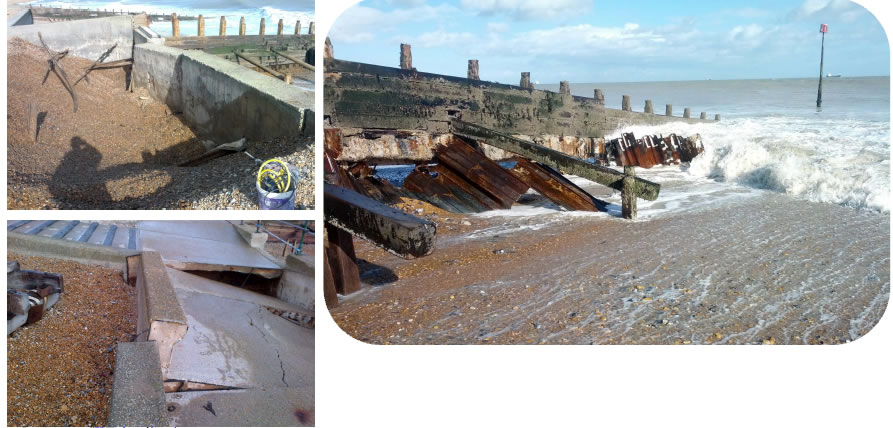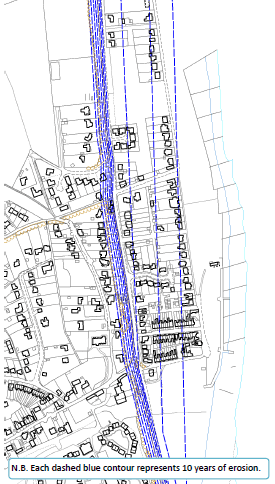Why do anything?

 The coastal defences in Kingsdown have reached the end of their design life and now are in desperate need of being replaced. The groynes and sea wall are no longer performing efficiently against erosion and are endangering Kingsdown from risk of flooding and erosion. Several emergency works have been carried out in the past fifteen years and although these works repaired parts of the defences, they are not a long term solution.
The coastal defences in Kingsdown have reached the end of their design life and now are in desperate need of being replaced. The groynes and sea wall are no longer performing efficiently against erosion and are endangering Kingsdown from risk of flooding and erosion. Several emergency works have been carried out in the past fifteen years and although these works repaired parts of the defences, they are not a long term solution.
The Southeast Regional Coastal Monitoring Programme, which records beach levels three times a year has revealed that Kingsdown is losing approximately 4,400m3of shingle every year. The existing seawall has been repaired six times over the past fifteen years (1997, 2002, 2010, 2011, 2013 and 2014) with shingle being scoured from underneath the wall, exposing the base of the seawall and the foundation bearing piles. This is evident in the fact that there have been failures in the seawall in 2011, 2013 and 2014 ‐ further erosion has only been prevented due to the emergency works that have been carried out. These emergency works are only of a temporary nature and the seawall is still at risk from undermining for nearly 400m, i.e. two thirds of its length. Any failure would allow the sea to excavate behind the sea wall, rapidly eroding the shingle beach between the seawall and the houses of Kingsdown.
There are currently 14 groynes at Kingsdown, most of which are in a very poor condition; some have almost completely failed. Despite temporary repairs to these groynes, the beach material is able to move freely between the majority of the bays.
Based on the current rate of erosion, if no action was to be taken after a seawall failure:
- The Zetland Arms would be lost to the sea within 5 years.
- The loss of the first property would be within 10 years.
- 173 residential properties and 5 non‐residential properties would be lost within 30 years.
- Within 100 years a total of 196 residential and 5 non‐residential properties would be lost.
Due to the dilapidated condition of the groynes, the significant erosion of the beach and the ease to which the seawall can fail, the risk of erosion of the land behind is very high. As little as a 1 in 10 year storm could potentially inundate the houses.
The socio‐economic impacts of ‘doing‐nothing’ for locals would be severe. As the amenity beach disappears, visitor numbers (currently 145,000 per year) would be expected to decline.

Full Menu
Contact
Liam Wooltorton, Canterbury City Council: Tel: 01227 862454, email liam.wooltorton@canterbury.gov.uk
or
Keith Watson, Dover District Council: Tel: 01304 872399, email keith.watson@dover.gov.uk